- Home
- Tom Clancy
Into the Storm: On the Ground in Iraq sic-1
Into the Storm: On the Ground in Iraq sic-1 Read online
Into the Storm: On the Ground in Iraq
( Study in Command - 1 )
Tom Clancy
Frederick M. Franks
In his brilliant, bestselling novels, Tom Clancy has explored the most dramatic military and security issues of our time. Now he takes readers deep into the operational art of war with this insightful look at one of America's most important military engagements in recent years: the Gulf War.
Never before has the art of maneuver warfare been explored so incisively and in such rich, provocative detail. Clancy and General Frederick M. Franks, Jr.-commander of the main force that broke the back of the Republican Guard-take us deep inside the war councils and command posts and up to the front lines. They give us a war that few people really knew-and that television never showed.
Tom Clancy, Frederick M. Franks
Into the Storm: On the Ground in Iraq
PRAISE FOR INTO THE STORM
"There will be some — in the future when our army again goes to war — who will take this work to the battlefield as a reminder of how great commanders accomplished the mission."
— Armor
"Two areas of this book merit special attention and should be mandatory reading for all military officers. Clancy's narrative of the army in transition and his chapter on maneuver warfare are superb… What the reader gains from [Franks's] candid admissions is a deep appreciation of the mind of a commander charged with employing 146,000 soldiers and 50,000 vehicles across 120 miles of enemy territory in the face of determined resistance."
— Army Magazine
"Franks manages to tell a good story, offer insights into leadership and set the record straight."
— Scripps Howard News Services
DEDICATION
This book is dedicated to:
THE VETERANS OF THE DESERT STORM VII CORPS JAYHAWKS AND THEIR FAMILIES.
THE BLACKHORSE TROOPERS OF THE IIth ACR.
THE MEN AND WOMEN OF AMERICA'S ARMY, WHO DO THEIR DUTY EVERY DAY, WHO BEAR THE WOUNDS OF WARS PAST, AND WHO DIED IN SERVICE TO OUR COUNTRY.
INTRODUCTION
The Quiet Lion
Heroes rarely look the part. The first holder of the Medal of Honor I met looked more like a retired accountant than John Wayne, and when I introduced General Fred Franks to a physician friend, the latter remarked that he was a dead ringer for the professor of pediatrics at Cornell University Medical School. And that's really the basis on which we first met. In 1991, I knew a young lad named Kyle who was afflicted with a rare and deadly form of cancer. A friend of mine, Major General Bill Stofft, was heading over to the Persian Gulf after the conclusion of hostilities. There was a senior officer over there, I'd heard, who'd lost a leg in Vietnam. My little buddy had just endured the surgical removal of his leg, and I asked Bill if he might approach this officer and ask him to write a brief letter of encouragement to Kyle, then at Memorial Sloan-Kettering Cancer Center in New York. The officer, I learned from General Stofft, was Fred Franks, then a lieutenant general, and commander of VII Corps. Bill delivered the request, and Lieutenant General Franks responded at once, calling it a privilege. He wrote a warm letter to my friend, and copied it to me with a cover note thanking me for making him aware of my friend and his affliction. That, really, is the bond between us.
Soon thereafter, Fred received another star and a new post as commanding general of the U.S. Army's Training and Doctrine Command (TRADOC) at Fort Monroe in the Virginia Tidewater, a plum job whose mission it is to look into the future and prepare for it, and it was there that we met for the first time. The first order of business was to thank him for his gracious solicitude to my little friend. He waved it off, thanking me again for the opportunity to look after a child, and really that's most of what I needed to learn about this gentleman.
Fred is a man of modest size and words — on the rare occasions when he swears, even that is quiet. There's an engaging shyness to this general officer. Don't be fooled. He's one of the undramatic people who gets the job done and moves on without fanfare to the next mission, leaving accomplishment in his wake.
Soldiers are not what we most often see portrayed on the screen. The best of them, the ones who ascend to generals' stars, are thoughtful students of their profession, scholarly commentators on history, and gifted observers of human psychology. The profession of arms is every bit as broad and deep as medicine or law. Like physicians, officers must know their subject in every detail, for they deal in the currency of life and death, and some mistakes can never be corrected. Like attorneys, they must plan everything in exquisite detail, because in some arenas you have but one chance to get it right.
The sheer intellectual complexity of command is something few have discussed with anything approaching accuracy. In preparing to move his VII Corps across the desert, Fred first of all had to consider the major pieces: U.S. 1st and 3rd Armored Divisions, the renowned 1st Infantry Division (Mechanized), the 1st Cavalry Division, U.K. 1st Armored Division, U.S. 2nd Armored Cavalry Regiment, and three separate artillery brigades. Those units alone account for nearly 100,000 soldiers, each of whom was assigned to a vehicle. Toss in the "loggies," the logistical troops whose unsung but vital job was to keep the "shooters" equipped with everything from diesel fuel to computer chips.
Okay, now imagine that you have to plan the rush hour for a city of, oh, say, 1 million, deciding how each worker gets home; that you have to account for every single one of them, from point of origin to destination, and that everyone has to arrive home at exactly the right time.
Oh, that's not all: Fred had to plan seven different options for his move. So you also must allow for seven different combinations of closed streets, road work, and broken bridges, while still allowing every commuter to make it home at the proper time.
By the way, if you mess this little job up, human lives will be lost.
Sounds easy? We haven't even gotten to the really hard part yet. People will be trying to kill the commuters — organized, trained people, with weapons — and you also must minimize that little hazard.
And yet, in a way, this was the easy part. Just to get to that point Fred Franks and his colleagues — men like Creighton Abrams, Ed Burba, Bill DePuy, Colin Powell, Butch Saint, Norm Schwarzkopf, Pete Taylor, Carl Vuono, and so many others — had to fix an Army that in their younger days as lieutenants and captains had been broken by poor political leadership and public antipathy. Fred lost part of a leg in Vietnam. His colleagues were all hurt in one way or another, and the Army nearly lost its soul, while America lost her confidence as a nation. As a major with 1.5 legs, lying in a bed in Valley Forge, he had to conquer pain and heartache, to wonder if he had a career before him at all, and to wonder also if his country gave a damn about him and his fellow amputees.
Remember just how dark those days were? The Army was on its back, its NCO corps bled nearly to death in Vietnam, drugs were rampant throughout the institution, and morale was so low that on more than one post, officers entered barracks only with an armed escort.
Fred was one of the men who had to make good all that others had conspired to destroy. Like the Army of the 1970s, he had to learn to walk all over again. As he had to repair the wounds in his heart, so the Army had to restore its confidence. All these things did happen, however, because Fred and men like him never lost faith in their country or their own ideals.
How great was their task? Looking back from today's perspective, it is more frightening, perhaps, than it was at the time, but the magnitude of the accomplishment can be measured simply: America won the Cold War because she and her allies were too strong to lose. That happened only
because Fred Franks and his wounded but proud band of brothers made her so, and that only after healing themselves. I started meeting these men in 1988, and that's when the idea for this book really began. The public image of the Army is most often that of the cinema, and that is generally an infantry squad, because a movie can show only so much. By the same token, the heaviest firepower the Army has — tanks and artillery, which do most of the killing on the modern battlefield — has been largely ignored. And so the image we have of the military is not so much false as limited. That's a lesson I learned at Fort Irwin, California, on a cold January morning. Having had the taste, I had to learn more, and I was fortunate in finding a superb collection of teachers.
Any army is a vast community of people more than a collection of their awesome tools. It may seem grotesque to call war-fighting an art, but warfighting is more than anything else the leadership of people, and handling people is the most demanding of human arts, all the more so when the currency is life and death. More than that, in a nation's military, you find the nation itself, all of its qualities, whether good or bad, distilled to an odd sort of purity. Our Army has traveled in a single lifetime down a strange and crooked road, from the triumph of World War II through the embarrassment of Korea, through peacekeeping and holding the line in Europe, through tragedy and waste in Vietnam, through near total collapse thereafter, through a long and wrenching process of reconstitution, then again to dominance on the sands of Iraq and Kuwait.
It's a story I could hardly tell by myself, and it's a story for more than one book. From Fred Franks I learned the story of the United States Army, so grievously wounded in Vietnam. Though the viewpoints and perspectives are mine, much of the story is his, and in certain chapters I have felt it only fitting that he tell it in his own words. Other aspects of America's recovery and dominance will come from others in future books, and I hope the reader will come to grasp just how much was done, and how much is owed. There were plenty of infantry squads, and tank crews, and cannoneers, and loggies, all wearing their nation's colors. All of them were trained, supported, and led by the professionals who kept the faith.
And so the man and the army that advanced across sand and rock were ready for their task, their memories of Vietnam never far from their minds, and the lessons of that experience in their hands. The army America deployed to the Persian Gulf might well have been the finest in all of history, equipped with the best weapons, trained in the most realistic fashion, and led by men who'd learned the hard way why you have to get it done right the first time. We all saw the results on TV.
It's been my honor to get to know this man. A man of iron and letters — he's taught poetry at the university level — Fred Franks symbolizes our army as well as any man could.
— TOM CLANCY
CHAPTER ONE
The Day Before
23 FEBRUARY 1991 2100
VII CORPS MAIN COMMAND POST
After the evening briefing and a brief talk to his staff and the liaison officers from subordinate units, Fred Franks went back to his sleeping shelter.
In his talk, Franks was emotional about the soldiers and hard-nosed about the task ahead. The staff was quiet and serious. Most listened quietly, and there was a lot of eye contact. When he finished, they all hollered a big "JAYHAWK" — VII Corps's nickname — and that was it. He left the tent.
Then he was alone with his thoughts. Before he got some rest he wanted to go over some things about the operation ahead and reflect on the events of this day.
There was one thought that would not leave him. "Don't worry, General, we trust you." A soldier in 3rd Armored Division had said that to him on 15 February during one of his many visits to VII Corps units. Now, how am I going to fulfill that trust? he asked himself. It was what the soldiers were thinking — he knew that — and he wanted to be worthy.
During Vietnam, that bond between the soldiers and the country's leaders in Washington had been shattered. It was an open wound. Fred Franks wanted to be one of the commanders who could heal that wound, who could rebuild that trust. It was a powerful, consuming thought on this eve of battle, one that never left him, ever.
The next day was G-Day, the beginning of the ground attack to liberate Kuwait of Iraqi forces. The Coalition plan was for the U.S. Marines and the Saudis to attack at 0400, 200 kilometers to the east of VII Corps, while the light forces of U.S. XVIII Corps — the 82nd Airborne Division and the 101st Airborne (Air Assault) Division — and the French would attack 100 kilometers to the west. And then the heavy forces — VII Corps, the armored units of XVIII Corps, and the JFCN (the Arab Joint Forces Command North, an Egyptian Corps and a Syrian division) — would attack on G+1, the day after the next, at BMNT (the beginning of morning nautical twilight, or first light), or 0538 GPS local time (they used global positioning systems to give exact time).
What Franks didn't know then was that this night was going to turn out to be the eve of his own VII Corps attack. When he learned of this change of plans the next day, it was to be for him one of the two greatest surprises of the war.
As far as he knew, the plan and the attack times were set, and he was considering nothing different. Nobody had mentioned the possibility of going early, not Third Army, CENTCOM,[1] John Yeosock (the Third Army commander, and Franks's immediate superior), or Norm Schwarzkopf. They had hashed out the timing time and again. As far as he knew, they had settled it. The Marines and the Saudis would go into Kuwait and fix Iraqi forces there, and then the heavy forces would go after the RGFC — the Republican Guards Forces Command. VII Corps, the Egyptian Corps, and the heavy part of XVIII Corps were scheduled to attack on G+1 at BMNT.
As he sat there in the silence of his sleeping shelter — an expando van on the back of a five-ton truck — he checked his cigar supply. It was still holding up. Then he lit one as he began to go over in his mind the posture for the attack the day after tomorrow. He had no map, but by now they had been over the plan so many times he had it almost committed to memory. As was his practice, he used the Army's basic problem-solving method and one he himself had taught many times, which went by the acronym METT-T (Mission, Enemy, Terrain, Troops available to you, and Time).
MISSION
The mission was simple: to destroy the RGFC in the VII Corps zone (the corps area of operations) and be prepared to defend northern Kuwait.
ENEMY
The situation was the same as it had been for the past several weeks. The Iraqis had essentially stayed in place, which was not surprising, considering the punishment they would take from the air if they tried any major force repositioning. As far as Fred Franks was concerned, that was just fine. The coalition had them where they wanted them.
Directly in front of VII Corps across the border was the Iraqi VII Corps. Their defense consisted of five infantry divisions, side by side, east to west, and one mechanized division behind them in depth. That defensive line started about twenty kilometers north of the border, with a complex obstacle system of mines, trenches, and defensive bunkers, thicker in the east and less so in the west. In the west, they had left an opening of about forty kilometers, where their defense line curved to the north and west, in order to prevent an envelopment. In military terms, this is called "refusing the flank." The width of their defending infantry divisions was about twenty-five kilometers each, with a total depth of twenty to thirty kilometers.
The VII Corps plan was for the 1st Infantry Division to penetrate one of these divisions in a breach mission, while an enveloping force, consisting of the 2nd Armored Cavalry Regiment, the 1st Armored Division, and the 3rd Armored Division, would simultaneously sweep around the Iraqi flank and attack toward the RGFC. The British 1st Armored Division would meanwhile pass through the 1st INF (infantry) breach, once that was secured, and attack toward the east to prevent Iraqi forces from threatening the VII Corps flank.
A big disagreement ahead of time had concerned the estimated width and depth of Iraqi frontline division sectors. U.S. intelligence thought the sec
tors were twenty-five kilometers wide and not so deep; the British thought the Iraqi division sectors were a more narrow fifteen kilometers and deeper. The British were correct, as it turned out, except that the division sectors got wider the farther west you went. That was of significant consequence later, as the British attack hit the command posts of the Iraqi frontline divisions rather than passing to their rear.
Behind the Iraqi VII Corps, the Republican Guards, Iraq's best, had not moved, either. There were six RGFC divisions, three armored/mechanized and three infantry (each Guards division had three brigades), with the closest of these about 150 kilometers from the VII Corps's line of departure. Though at this point, all six were in the VII Corps zone of attack, from the start Franks's intent was to aim VII Corps at the three Guards armored/mechanized divisions (Tawalkana, Medina, and Hammurabi). They knew about where these heavy divisions were, as well as the locations of the three RGFC infantry divisions.
Because air had been able to fix the RGFC strategically (the Iraqis knew that if they tried any major moves, they'd get hit hard), there had not been any apparent major force repositioning since the air campaign had started on 17 January. But air had not completely immobilized the RGFC. The Guards were able to move up to brigade-sized units locally in tactical repositioning, and they had done so frequently. Since immediate intelligence about these changes in position was not available to VII Corps, they would know only approximately where the RGFC brigades were located at any given time.
In other words, that meant that the Iraqi armored forces retained tactical freedom of movement and could move from twenty-five to fifty kilometers to adjust their positions. Thus, attacking units would not know for sure what was just beyond visual range. It would therefore be up to attacking troops to fix the enemy tactically, and then to destroy them. That distinction would dictate Franks's tactics and those of his subordinate unit commanders as they approached RGFC locations. It was likely that attacking units would be involved in a great many "meeting engagements."[2]

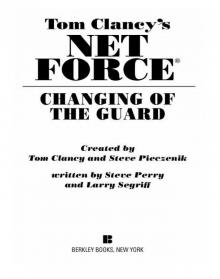 Changing of the Guard
Changing of the Guard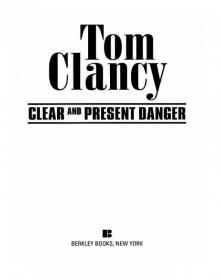 Clear and Present Danger
Clear and Present Danger Hounds of Rome
Hounds of Rome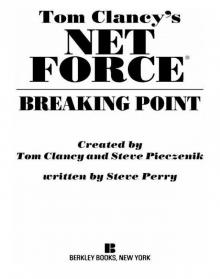 Breaking Point
Breaking Point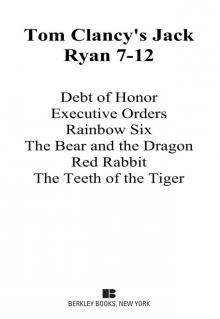 Tom Clancy's Jack Ryan Books 7-12
Tom Clancy's Jack Ryan Books 7-12 Full Force and Effect
Full Force and Effect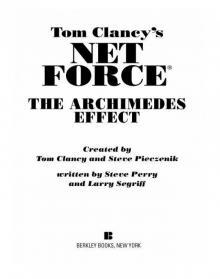 The Archimedes Effect
The Archimedes Effect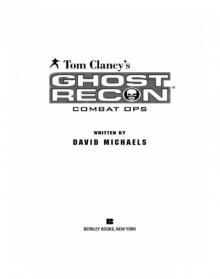 Combat Ops
Combat Ops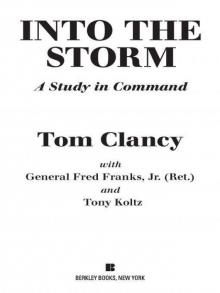 Into the Storm: On the Ground in Iraq
Into the Storm: On the Ground in Iraq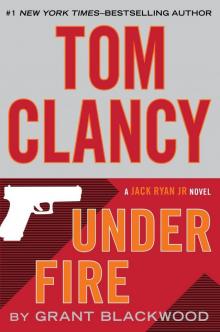 Under Fire
Under Fire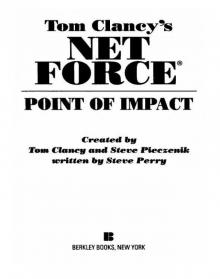 Point of Impact
Point of Impact Red Rabbit
Red Rabbit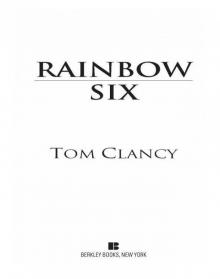 Rainbow Six
Rainbow Six The Hunt for Red October
The Hunt for Red October The Teeth of the Tiger
The Teeth of the Tiger Conviction (2009)
Conviction (2009)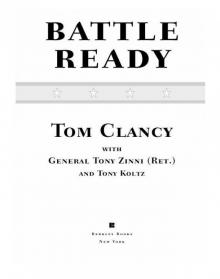 Battle Ready
Battle Ready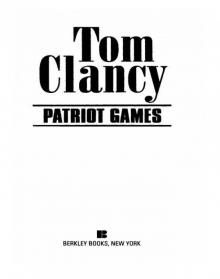 Patriot Games
Patriot Games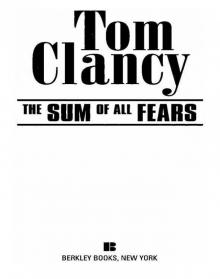 The Sum of All Fears
The Sum of All Fears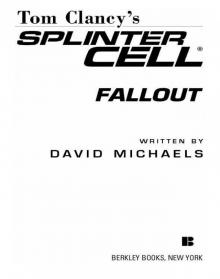 Fallout (2007)
Fallout (2007) Red Storm Rising
Red Storm Rising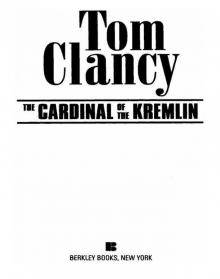 The Cardinal of the Kremlin
The Cardinal of the Kremlin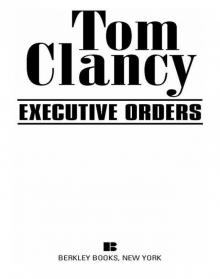 Executive Orders
Executive Orders Lincoln, the unknown
Lincoln, the unknown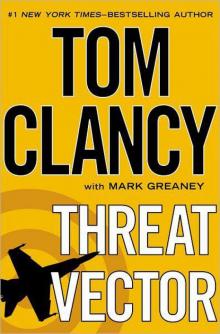 Threat Vector
Threat Vector The Hunted
The Hunted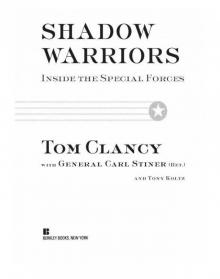 Shadow Warriors: Inside the Special Forces
Shadow Warriors: Inside the Special Forces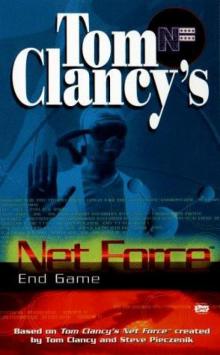 End Game
End Game Special Forces: A Guided Tour of U.S. Army Special Forces
Special Forces: A Guided Tour of U.S. Army Special Forces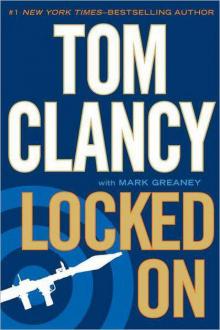 Locked On
Locked On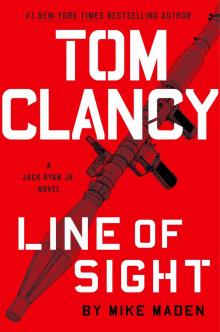 Line of Sight
Line of Sight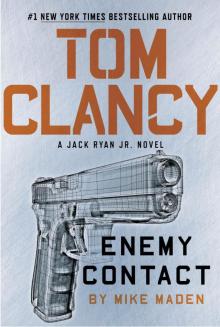 Tom Clancy Enemy Contact - Mike Maden
Tom Clancy Enemy Contact - Mike Maden Fighter Wing: A Guided Tour of an Air Force Combat Wing
Fighter Wing: A Guided Tour of an Air Force Combat Wing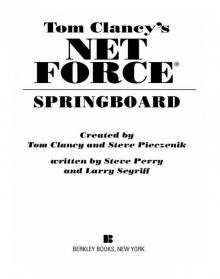 Springboard
Springboard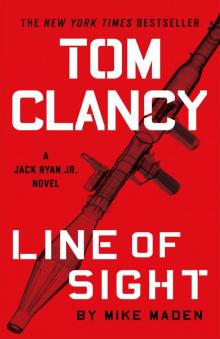 Line of Sight - Mike Maden
Line of Sight - Mike Maden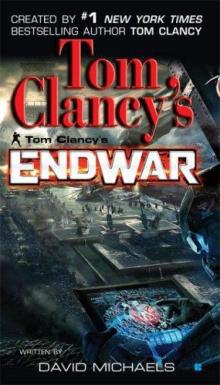 EndWar
EndWar Dead or Alive
Dead or Alive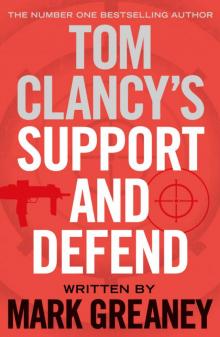 Tom Clancy Support and Defend
Tom Clancy Support and Defend Checkmate
Checkmate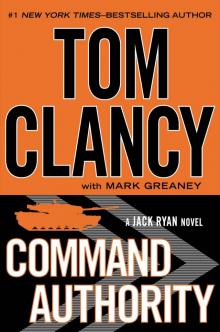 Command Authority
Command Authority Carrier: A Guided Tour of an Aircraft Carrier
Carrier: A Guided Tour of an Aircraft Carrier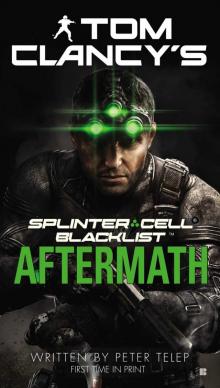 Blacklist Aftermath
Blacklist Aftermath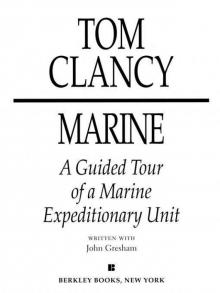 Marine: A Guided Tour of a Marine Expeditionary Unit
Marine: A Guided Tour of a Marine Expeditionary Unit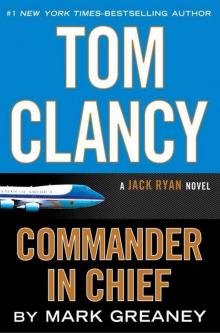 Commander-In-Chief
Commander-In-Chief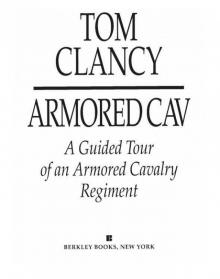 Armored Cav: A Guided Tour of an Armored Cavalry Regiment
Armored Cav: A Guided Tour of an Armored Cavalry Regiment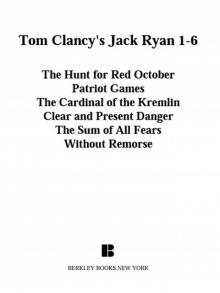 Tom Clancy's Jack Ryan Books 1-6
Tom Clancy's Jack Ryan Books 1-6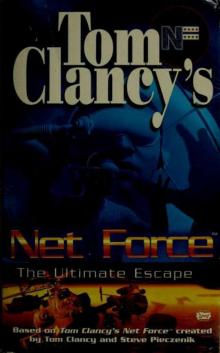 The Ultimate Escape
The Ultimate Escape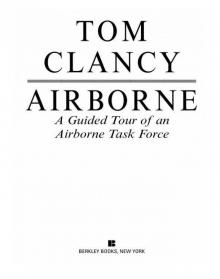 Airborne: A Guided Tour of an Airborne Task Force
Airborne: A Guided Tour of an Airborne Task Force Debt of Honor
Debt of Honor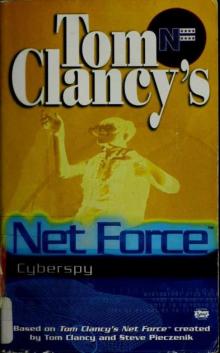 Cyberspy
Cyberspy Point of Contact
Point of Contact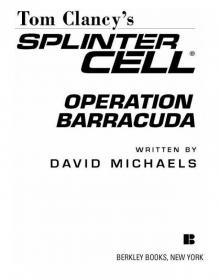 Operation Barracuda (2005)
Operation Barracuda (2005)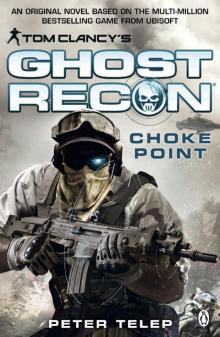 Choke Point
Choke Point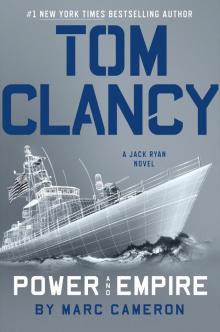 Power and Empire
Power and Empire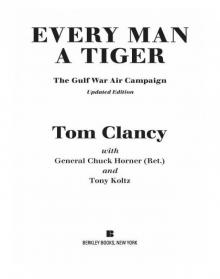 Every Man a Tiger: The Gulf War Air Campaign
Every Man a Tiger: The Gulf War Air Campaign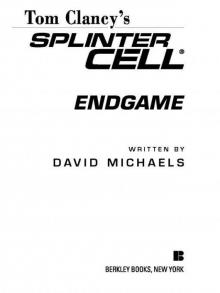 Endgame (1998)
Endgame (1998)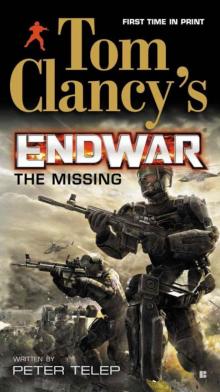 EndWar: The Missing
EndWar: The Missing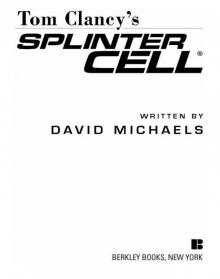 Splinter Cell (2004)
Splinter Cell (2004) The Great Race
The Great Race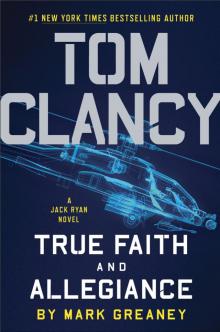 True Faith and Allegiance
True Faith and Allegiance Deathworld
Deathworld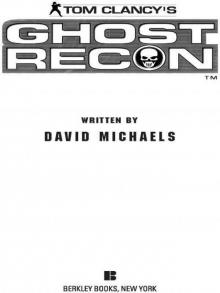 Ghost Recon (2008)
Ghost Recon (2008) Duel Identity
Duel Identity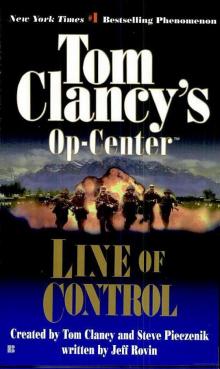 Line of Control o-8
Line of Control o-8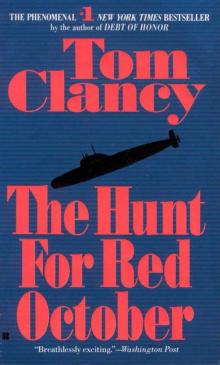 The Hunt for Red October jr-3
The Hunt for Red October jr-3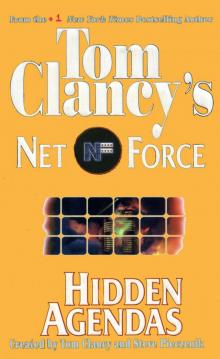 Hidden Agendas nf-2
Hidden Agendas nf-2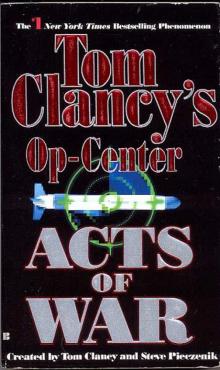 Acts of War oc-4
Acts of War oc-4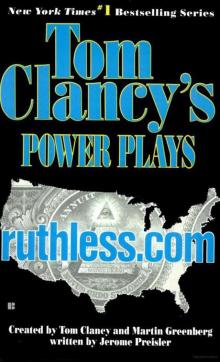 Ruthless.Com pp-2
Ruthless.Com pp-2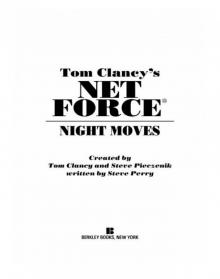 Night Moves
Night Moves The Hounds of Rome - Mystery of a Fugitive Priest
The Hounds of Rome - Mystery of a Fugitive Priest Into the Storm: On the Ground in Iraq sic-1
Into the Storm: On the Ground in Iraq sic-1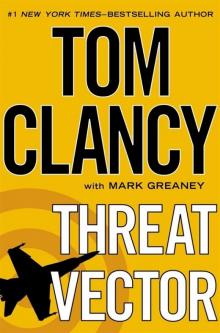 Threat Vector jrj-4
Threat Vector jrj-4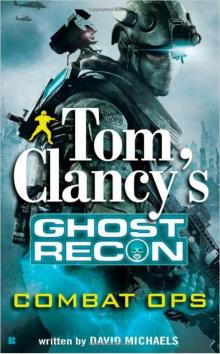 Combat Ops gr-2
Combat Ops gr-2 Virtual Vandals nfe-1
Virtual Vandals nfe-1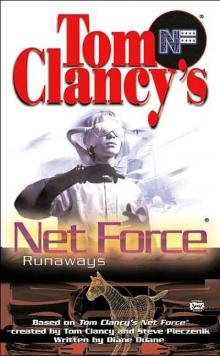 Runaways nfe-16
Runaways nfe-16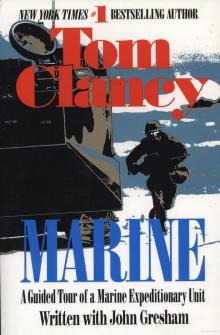 Marine: A Guided Tour of a Marine Expeditionary Unit tcml-4
Marine: A Guided Tour of a Marine Expeditionary Unit tcml-4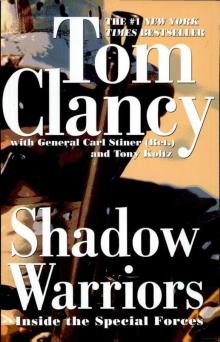 Shadow Warriors: Inside the Special Forces sic-3
Shadow Warriors: Inside the Special Forces sic-3 Jack Ryan Books 1-6
Jack Ryan Books 1-6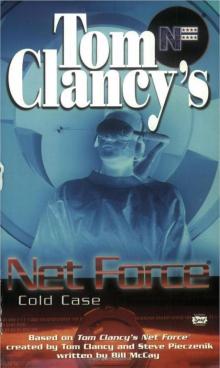 Cold Case nfe-15
Cold Case nfe-15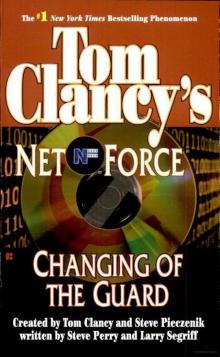 Changing of the Guard nf-8
Changing of the Guard nf-8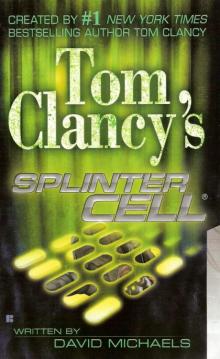 Splinter Cell sc-1
Splinter Cell sc-1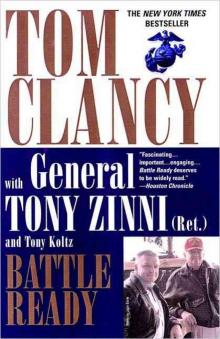 Battle Ready sic-4
Battle Ready sic-4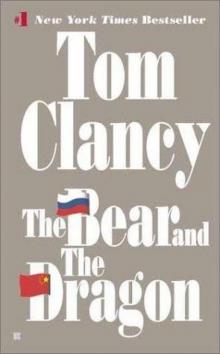 The Bear and the Dragon jrao-11
The Bear and the Dragon jrao-11 Fighter Wing: A Guided Tour of an Air Force Combat Wing tcml-3
Fighter Wing: A Guided Tour of an Air Force Combat Wing tcml-3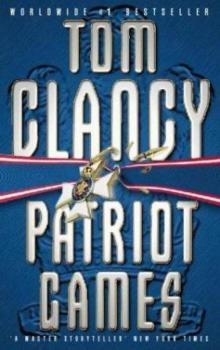 Patriot Games jr-1
Patriot Games jr-1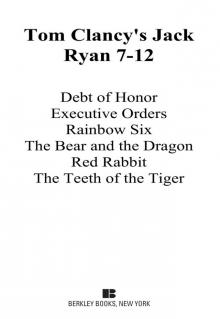 Jack Ryan Books 7-12
Jack Ryan Books 7-12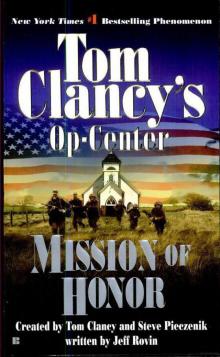 Mission of Honor o-9
Mission of Honor o-9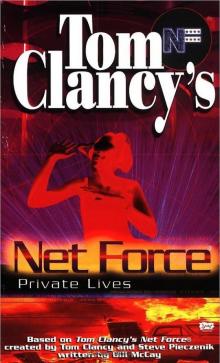 Private Lives nfe-9
Private Lives nfe-9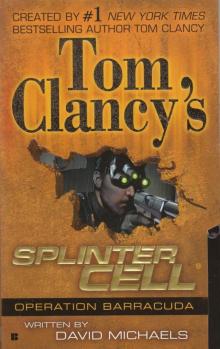 Operation Barracuda sc-2
Operation Barracuda sc-2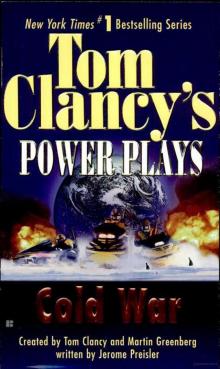 Cold War pp-5
Cold War pp-5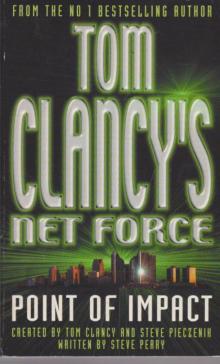 Point of Impact nf-5
Point of Impact nf-5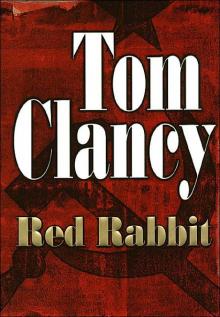 Red Rabbit jr-9
Red Rabbit jr-9 The Deadliest Game nfe-2
The Deadliest Game nfe-2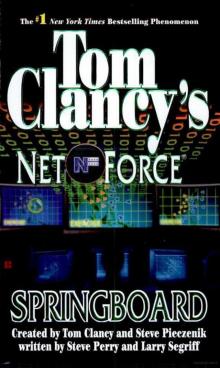 Springboard nf-9
Springboard nf-9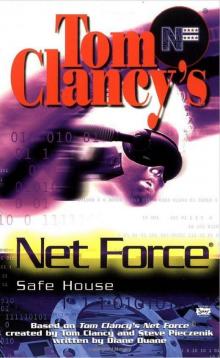 Safe House nfe-10
Safe House nfe-10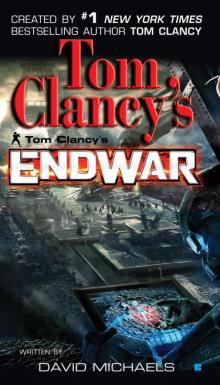 EndWar e-1
EndWar e-1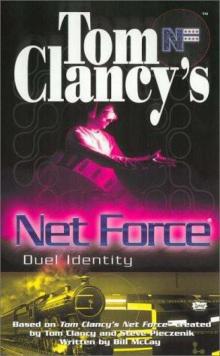 Duel Identity nfe-12
Duel Identity nfe-12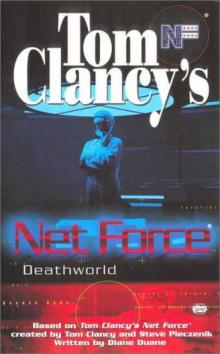 Deathworld nfe-13
Deathworld nfe-13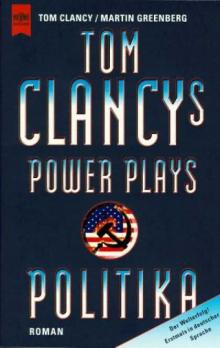 Politika pp-1
Politika pp-1 Rainbow Six jr-9
Rainbow Six jr-9 Tom Clancy's Power Plays 1 - 4
Tom Clancy's Power Plays 1 - 4 Endgame sc-6
Endgame sc-6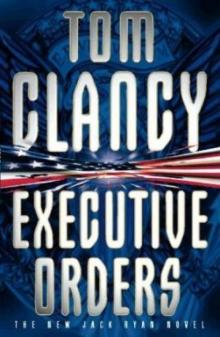 Executive Orders jr-7
Executive Orders jr-7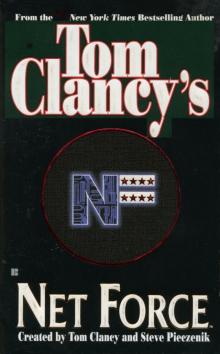 Net Force nf-1
Net Force nf-1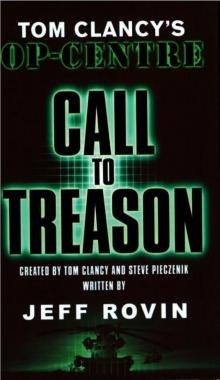 Call to Treason o-11
Call to Treason o-11 Locked On jrj-3
Locked On jrj-3 Against All Enemies
Against All Enemies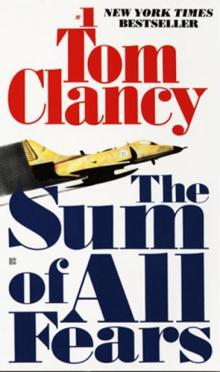 The Sum of All Fears jr-7
The Sum of All Fears jr-7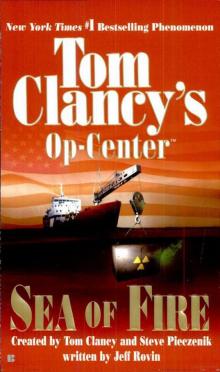 Sea of Fire o-10
Sea of Fire o-10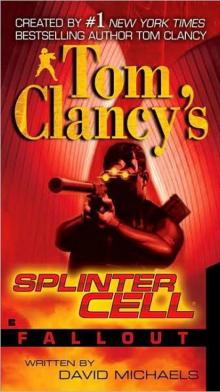 Fallout sc-4
Fallout sc-4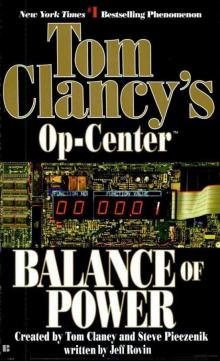 Balance of Power o-5
Balance of Power o-5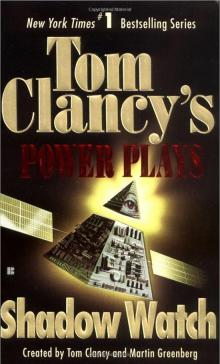 Shadow Watch pp-3
Shadow Watch pp-3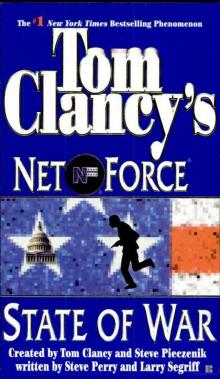 State of War nf-7
State of War nf-7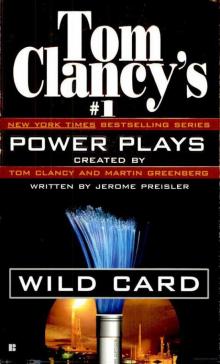 Wild Card pp-8
Wild Card pp-8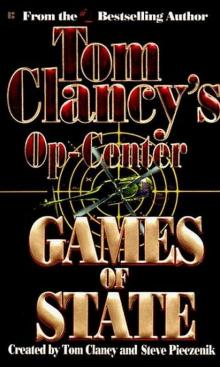 Games of State o-3
Games of State o-3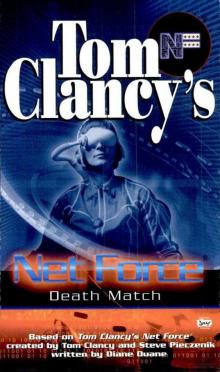 Death Match nfe-18
Death Match nfe-18 Against All Enemies mm-1
Against All Enemies mm-1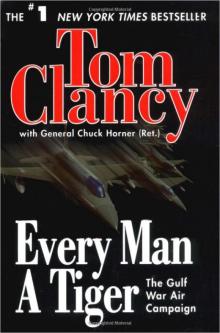 Every Man a Tiger: The Gulf War Air Campaign sic-2
Every Man a Tiger: The Gulf War Air Campaign sic-2 Cybernation nf-6
Cybernation nf-6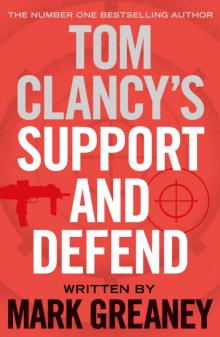 Support and Defend
Support and Defend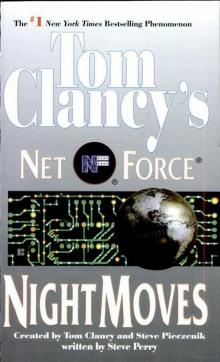 Night Moves nf-3
Night Moves nf-3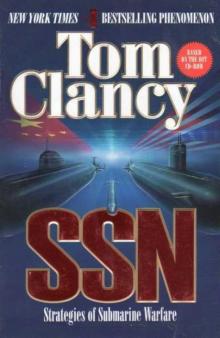 SSN
SSN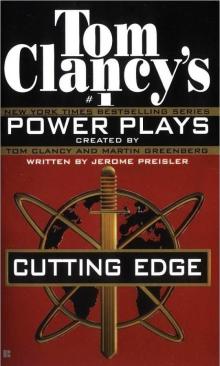 Cutting Edge pp-6
Cutting Edge pp-6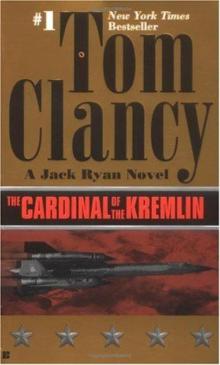 The Cardinal of the Kremlin jrao-5
The Cardinal of the Kremlin jrao-5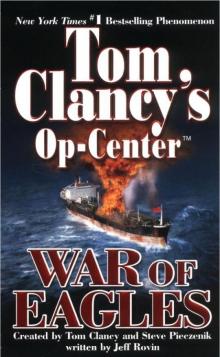 War of Eagles o-12
War of Eagles o-12 Op-Center o-1
Op-Center o-1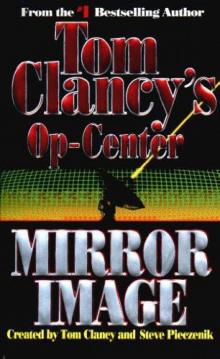 Mirror Image o-2
Mirror Image o-2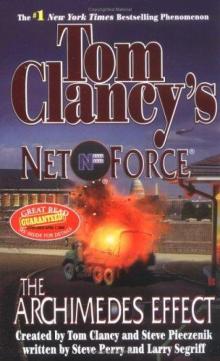 The Archimedes Effect nf-10
The Archimedes Effect nf-10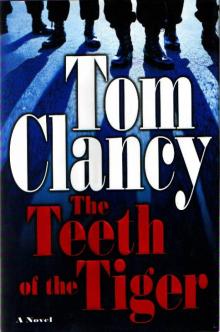 Teeth of the Tiger jrj-1
Teeth of the Tiger jrj-1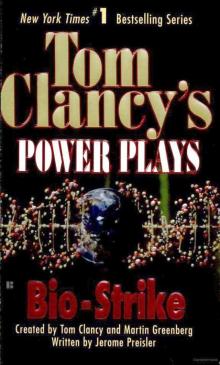 Bio-Strike pp-4
Bio-Strike pp-4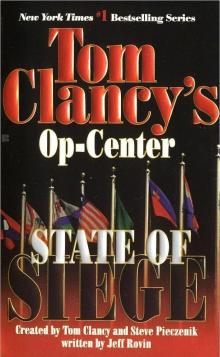 State of Siege o-6
State of Siege o-6 Debt of Honor jr-6
Debt of Honor jr-6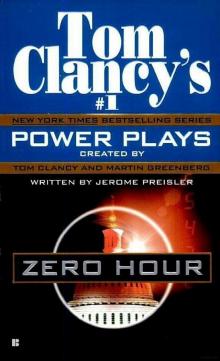 Zero Hour pp-7
Zero Hour pp-7 Ghost Recon gr-1
Ghost Recon gr-1 Command Authority jr-10
Command Authority jr-10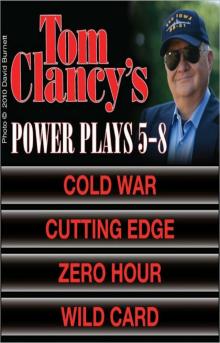 Tom Clancy's Power Plays 5 - 8
Tom Clancy's Power Plays 5 - 8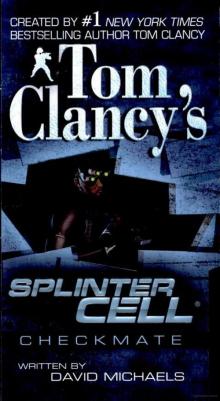 Checkmate sc-3
Checkmate sc-3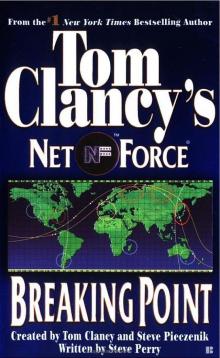 Breaking Point nf-4
Breaking Point nf-4 Gameprey nfe-11
Gameprey nfe-11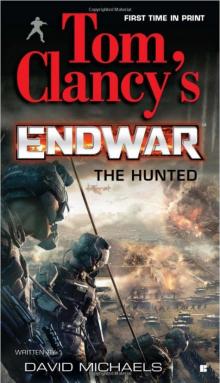 The Hunted e-2
The Hunted e-2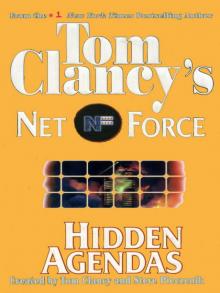 Hidden Agendas
Hidden Agendas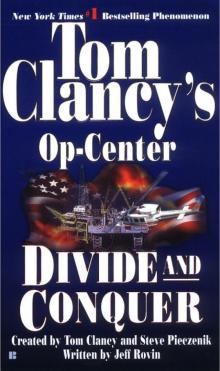 Divide and Conquer o-7
Divide and Conquer o-7